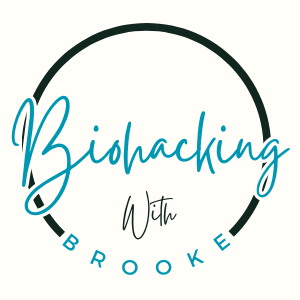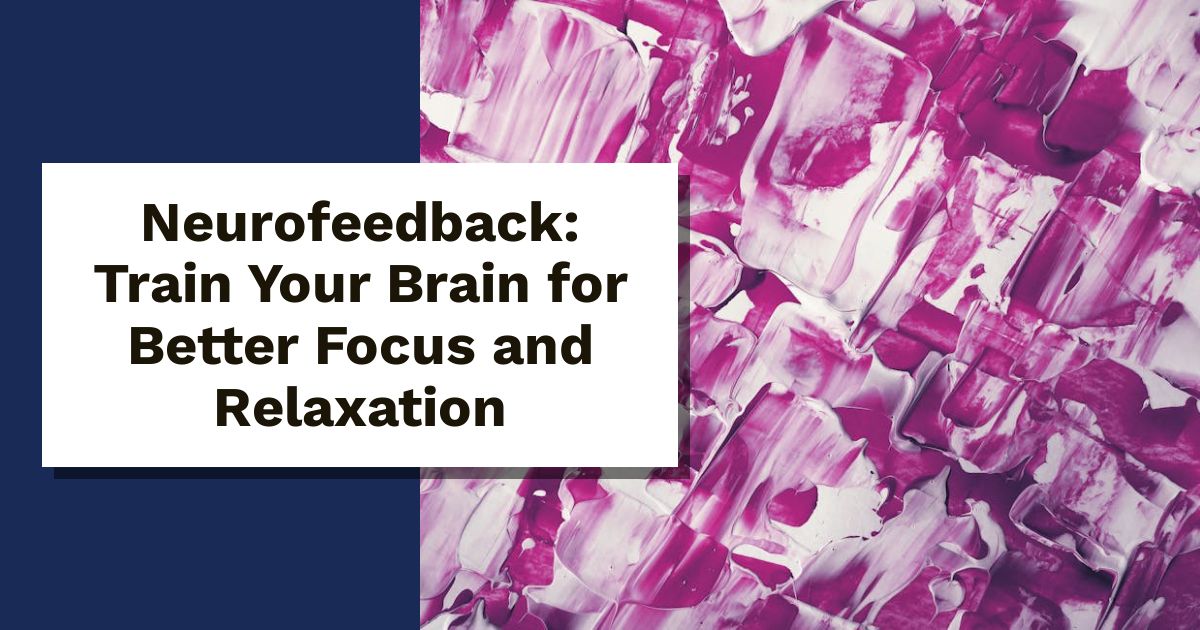Ever wonder if you could train your brain like a muscle? Welcome to the quirky world of neurofeedback, where biohackers are tuning in to their minds for sharper focus and deep relaxation.
This post uncovers how neurofeedback works and why it’s becoming a go-to tool for those looking to enhance performance. You’ll discover simple techniques, benefits, and how this brain-training method offers more than just higher productivity.
Join the brain-training revolution and learn how to boost your mental game, one session at a time. Your brain deserves it!
What is Neurofeedback?
Neurofeedback is all about training your brain to perform at its best. This fascinating method relies on real-time monitoring of brain activity. By observing how your brain behaves, you can learn to control it and improve its function. Let’s break this down further.
The Basics of Brain Waves
Understanding brain waves is crucial to grasping the significance of neurofeedback. Your brain operates using electrical signals, leading to different types of brain waves. These waves have distinct functions and frequencies:
- Delta Waves (0.1 to 3.5 Hz): Deep sleep and restorative states.
- Theta Waves (3.5 to 7.5 Hz): Creativity, intuition, and deep relaxation.
- Alpha Waves (8 to 12 Hz): Calm focus and a relaxed, yet alert state.
- Beta Waves (13 to 30 Hz): Active thinking, problem-solving, and anxiety.
- Gamma Waves (>30 Hz): High-level information processing and cognitive functioning.
By learning about these brain waves, you can see how they correlate with various mental states and activities. This knowledge is essential for using neurofeedback effectively. For in-depth information on brain waves, check out ScienceDirect.
How Neurofeedback Works
Neurofeedback operates on the principle that by observing brain activity, you can train your brain to improve its functioning. During a session, sensors are placed on your scalp to monitor your brain waves. Here’s how it goes down:
- Real-time feedback: As your brain waves are monitored, you receive immediate feedback. This often comes in the form of visual or auditory signals.
- Self-regulation: The feedback helps you learn to adjust your brain waves. For instance, you might try to increase alpha waves for relaxation or decrease beta waves if you’re feeling anxious.
- Brain training: Over time and with practice, this can lead to lasting improvements in how your brain functions. It’s like turning down the volume on stress and turning up the dial on focus.
Research shows that engaging in neurofeedback can lead to meaningful changes in behavior and mental health. If you’re curious about the science behind this method, check out this comprehensive review.
By comprehending brain waves and how neurofeedback works, you’re one step closer to harnessing your own brain’s potential for focus and relaxation.
The Benefits of Neurofeedback
Neurofeedback is not just a neat trick; it comes packed with plenty of benefits. This innovative brain-training method goes beyond the typical “brain gym” and can significantly affect various aspects of your mental well-being. Let’s explore some key benefits, focusing on how neurofeedback helps improve focus and attention, reduce anxiety and stress, and enhance sleep quality.
Improving Focus and Attention
Ever feel like a thousand thoughts are battling for your attention? Neurofeedback can help you regain control. By training your brain to focus better, neurofeedback can enhance your concentration levels significantly. Here’s how:
- Targeted Training: Neurofeedback sessions guide your brain into desired states by rewarding focus. Think of it as a video game where the better you do, the more instant feedback you get.
- Real-time Monitoring: As you learn to channel your attention, the sensors on your scalp provide immediate feedback. This connection reinforces your ability to sustain focus on tasks.
- Increased Brain Power: Research has shown that individuals who undergo neurofeedback training can experience heightened cognitive function and improved attention spans. Check out this comprehensive study for deeper insights.
Imagine walking into a room filled with distractions and being able to tune them all out. That’s the magic that neurofeedback can bring to your everyday life.
Reducing Anxiety and Stress
If stress has become an unwelcome companion, neurofeedback might be your path to a calmer mind. This approach focuses on regulating your brain waves, ultimately promoting relaxation and anxiety relief.
- Brain Wave Adjustment: Neurofeedback helps decrease beta waves, often linked to anxiety, while boosting alpha waves that are associated with a relaxed state. This method can lead to significant reductions in anxiety symptoms.
- Non-invasive Treatment: Unlike medication, neurofeedback is a natural, non-invasive technique that allows your brain to learn new ways to cope with stress.
Curious about this process? Discover how it works in this article. The goal here is to create a balanced mental environment, enabling you to tackle life’s stressors head-on.
Enhancing Sleep Quality
Tired of tossing and turning? Neurofeedback can be a game changer for your sleep routine. By training your brain, you can improve your sleep quality dramatically.
- Sleep Wave Training: Neurofeedback can enhance delta and theta wave activity, promoting deeper and more restful sleep.
- Research-Backed Effects: Studies have shown that those who undergo neurofeedback tend to experience better sleep patterns and improved overall restfulness. For a detailed look, check this study from Frontiers in Neuroscience.
Picture waking up refreshed and ready to conquer the day, all thanks to better sleep. That’s the potential neurofeedback offers.
Embracing neurofeedback opens the door to enhanced focus, reduced stress, and improved sleep quality. With this unique brain training, you aren’t just getting by — you’re thriving.
Getting Started with Neurofeedback
Exploring neurofeedback is exciting, but knowing where to begin can feel daunting. Whether you want to find a qualified practitioner or are curious about at-home devices, this section has your back.
Finding a Qualified Practitioner
Choosing the right neurofeedback practitioner is crucial for an effective experience. Here are some tips to help you on your search:
- Look for Credentials: Search for practitioners certified by reputable organizations, such as the Biofeedback Certification International Alliance (BCIA). They have met high standards in training and ethics.
- Check Local Listings: Use directories like the ISNR or Psychology Today to find professionals in your area.
- Read Reviews: Online reviews can provide insight into others’ experiences. Look for feedback on practitioners’ techniques and success rates.
- Ask Questions: Don’t hesitate to reach out to potential practitioners. Inquire about their experience, techniques, and expected outcomes. This will give you a feel for their approach.
- See What’s Available: You can also explore the BCIA’s online search tool for finding board-certified neurofeedback providers nearby.
Choosing a qualified practitioner helps you unlock the full potential of neurofeedback training.
Home Neurofeedback Devices
Want to train your brain without stepping out? Home neurofeedback devices are gaining traction. Here’s what to consider:
- Convenience: Home devices allow you to train on your schedule. You can practice while lounging on your couch or even during your lunch break.
- Variety of Options: Many devices are on the market, from headbands to comprehensive systems. Check out the Top 10 Neurofeedback Devices for 2024 to find the best fit for your needs.
- Affordability: Some devices are budget-friendly, providing excellent value for effective brain training. You can explore options on sites like Amazon for a range of products.
- User-Friendly: Many at-home devices are designed for ease of use. Products like the Myndlift offer remote neurofeedback training you can access through your preferred media.
- Research and Reviews: Before investing, read reviews to gauge what other users have found effective. Discussions on forums like Reddit can also provide insights into popular choices.
Home neurofeedback devices present a fun and flexible way to enhance your brain training journey.
Neurofeedback vs. Traditional Therapy
Neurofeedback offers a fresh approach to mental wellness, distinct from traditional therapy. Understanding these differences can help you decide which method suits you best. Let’s explore how these two strategies align and diverge.
Similarities and Differences
Both neurofeedback and traditional therapy aim to improve mental health and emotional well-being, but they adopt different paths to achieve results.
- Focus on Mental Health: Both methods address issues like anxiety, depression, and attention disorders. However, traditional therapy uses talk-based strategies, allowing you to explore thoughts and feelings with a therapist. Neurofeedback, on the other hand, is all about training your brain. It employs real-time monitoring to guide improvements in brainwave patterns.
- Treatment Duration: Traditional therapy often requires ongoing sessions over weeks or months. Each session builds on previous ones, leading to progress through discussion and insight. Neurofeedback may deliver results more quickly. Some users report noticeable improvements after just a few sessions, as they directly engage with their brain’s function.
- Mechanism of Action: Traditional therapy relies heavily on verbal communication and therapist guidance. It helps you gain insight into your feelings and behaviors. In contrast, neurofeedback is more technical, using sensors to monitor brain waves and provide feedback. This non-invasive approach teaches you to self-regulate, which can reinforce healthier brain activity patterns over time. For further insights on how these modalities compare, check out NHA Blog.
So, while both methods have the same goal, they differ significantly in approach, techniques, and potential effectiveness.
Who Should Consider Neurofeedback?
Neurofeedback isn’t one-size-fits-all. However, it can be a powerful tool for specific groups.
- Individuals with Focus Issues: If you struggle with attention disorders like ADHD, neurofeedback might help. Many people report improvements in focus and concentration after just a few sessions. It’s worth exploring if traditional methods haven’t worked for you.
- Stress and Anxiety Sufferers: Those battling anxiety or chronic stress can benefit from the calming effects of neurofeedback. By training your brain to generate more relaxing waves, you may find relief where traditional therapy hasn’t provided sufficient help.
- People Seeking Alternative Treatments: If you prefer a non-invasive approach that doesn’t involve medication, neurofeedback can be an appealing option. It’s gaining traction as a supportive therapy for various mental health issues.
- Athletes and High Performers: Individuals in high-pressure environments, like athletes, can use neurofeedback for cognitive enhancement. Fine-tuning mental performance is a growing trend among those wanting to stay sharp under pressure.
If you feel like neurofeedback could resonate with your journey, dive deeper into this treatment option. For more details about who can benefit, check out Verywell Mind.
Common Myths and Misconceptions
When it comes to neurofeedback, misunderstandings are common. Let’s clear up some of the most frequent myths to help you better grasp this fascinating brain-training technique.
Neurofeedback is Only for ADHD
A prevalent belief is that neurofeedback is a therapy limited to ADHD treatment. In reality, this approach benefits a diverse range of individuals. Whether you struggle with anxiety, depression, sleep issues, or want to enhance cognitive performance, neurofeedback can be a helpful tool.
- Wide-ranging Benefits: Studies show that neurofeedback can aid in improving focus and emotional regulation, not just for those with attention disorders. Individuals looking for a mental boost, including athletes and students, find value in it too. For more insights, see The Advantages of Neurofeedback.
- Accessible to All: Age, profession, or specific mental health conditions don’t restrict neurofeedback. Anyone looking to optimize their cognitive function or emotional well-being can explore it. Check out this article on 24 Potential Uses of Neurofeedback Therapy for a deeper understanding.
Neurofeedback isn’t a one-trick pony; it can help various people harness their brain’s potential.
It is a Quick Fix
Think of neurofeedback as a gym for your brain. Just like you wouldn’t expect to build muscle overnight, don’t expect instant results from neurofeedback. This process requires time and commitment to see genuine improvements.
- Session Commitment: Most practitioners recommend 20 to 40 sessions to notice real changes. The exact number can vary based on individual needs and goals. Interested in how many sessions might be right for you? Check out this guide on How Many Neurofeedback Sessions Do You Need?.
- Building New Patterns: Neurofeedback involves training your brain to recognize and adjust its activity. Just as you wouldn’t quit your workout regimen after a few days, consistency in neurofeedback sessions is crucial. It takes time to rewire your brain into better functioning patterns. Learn more about the commitment required in Is Neurofeedback Right for You?.
So, if you’re considering neurofeedback, be ready to invest time into your brain’s training. It’s a process, but your efforts can lead to lasting change.
Success Stories and Research
Learning about the real-life impact of neurofeedback adds a personal touch to this innovative brain training technique. Many individuals have turned their cognitive struggles into success stories thanks to this method.
Real-Life Experiences
Thousands have experienced the benefits of neurofeedback, each story unique and inspiring. Here are a few notable anecdotes:
- Frankie’s Transformation: After 14 months of neurofeedback training, Frankie, a young student, had much better days at school. His ability to keep up with schoolwork improved dramatically, and he learned to handle frustration more effectively. Read more about his journey.
- A Reddit Testimonial: One user shared their experience of overcoming acute trauma-induced depersonalization after just 18 sessions of neurofeedback. They felt completely transformed, highlighting the method’s potential impact on mental health. For their full story, check this Reddit discussion.
- Awaken the Mind: Another success came from a young man who underwent 30 neurofeedback sessions. The significant improvements prompted a reduction in his medication, and the hope of eventually being medication-free became realistic. This story can be found here.
These stories showcase real people reclaiming their lives through neurofeedback, demonstrating its power to promote mental wellness in practical, meaningful ways.
Current Research Findings
Research plays a crucial role in validating the effects of neurofeedback. Numerous studies support its efficacy in improving mental health and cognitive functioning:
- A systematic review and meta-analysis showed that neurofeedback training can lead to clinically meaningful improvements in various conditions. The findings highlight substantial effect sizes, especially at follow-up assessments. Learn more in this Frontiers in Psychiatry article.
- A randomized-controlled trial investigated the effects of neurofeedback on adults with ADHD. Results indicated that participants learned to regulate brain activity during training, leading to improvements in attention and cognitive control. Full details are available in this Nature study.
- Recent research also examined the effectiveness of neurofeedback on motor performance in healthy adults. This analysis reported overall positive effects, further establishing neurofeedback as a promising tool for cognitive enhancement. For more insights, check out this Scientific Direct article.
These studies solidify neurofeedback’s reputation as more than just a passing trend—it’s an evidence-based approach that brings tangible benefits to mental health and cognitive function.
Conclusion
Neurofeedback offers a powerful way to optimize your brain’s performance. By training your mind, you can enhance focus, reduce stress, and improve sleep quality. This method isn’t just for those facing challenges like ADHD; it’s also great for anyone looking to boost their mental game.
Consider taking the leap into neurofeedback training. Whether you choose to work with a practitioner or explore at-home devices, the benefits are within reach.
What could you achieve with a sharper mind and a calmer spirit? The possibilities are exciting. Make your brain a priority, and start your journey today!
Brooke is a rock-climbing 🧗♀️, tennis-playing 🎾, biohacking 🧬 bookworm 📚 on a mission to unlock the secrets of health, longevity, and living life to the fullest 🌟. When she’s not scaling cliffs, hitting the courts, or testing out the latest hacks, you’ll find her nose in a book or adventuring with her four-legged best friend 🐕 by her side. With a knack for turning science into simple, actionable tips, Brooke’s writing is your guide to hacking your biology and living your best, most vibrant life!


